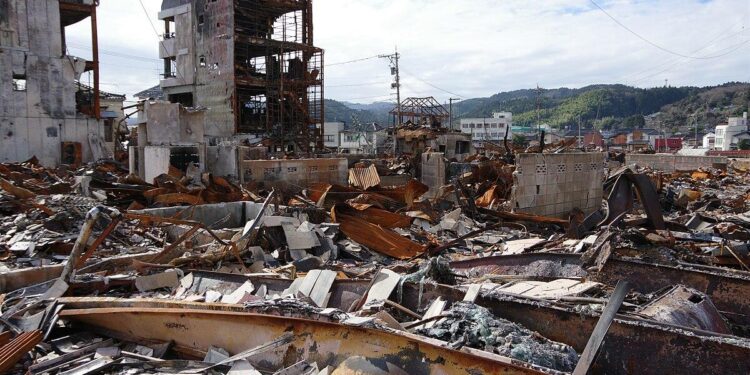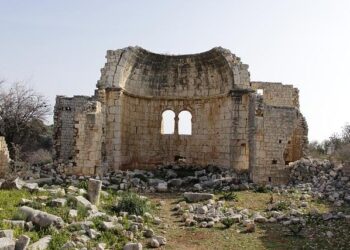A 4.3 magnitude earthquake rattled Konya province in central TĂ¼rkiye earlier today, causing noticeable tremors but no immediate reports of significant damage or casualties. The seismic event, recorded by the national earthquake monitoring center, has prompted local authorities to assess the situation and reassure residents. This incident underscores the region’s vulnerability to tectonic activity, even as TĂ¼rkiye continues to enhance its earthquake preparedness and response systems. Further updates are expected as officials conduct evaluations on the ground.
Earthquake Hits Konya Province Raising Concerns Over Regional Seismic Activity
Residents of Konya Province were startled by a 4.3-magnitude earthquake that struck the central region of TĂ¼rkiye late last night. The tremor, which lasted approximately 15 seconds, was felt across multiple districts causing minor structural damages and disrupting daily activities. Local authorities quickly mobilized emergency response teams, though no casualties have been reported so far. Experts from the Kandilli Observatory emphasized that while the earthquake’s magnitude was moderate, its occurrence in an area not frequently associated with high seismic activity has raised significant concerns among the scientific community and residents alike.
The unexpected seismic event has prompted renewed attention to the seismic risks in central Anatolia, highlighting the need for updated risk assessments and preparedness measures in the region. Early assessments indicate potential aftershocks within the next 48 hours, necessitating vigilance. Key points under review by authorities include:
- Monitoring of fault line activity in Konya and neighboring provinces
- Reinforcement of infrastructure resilience in vulnerable areas
- Community awareness campaigns on earthquake preparedness
| Parameter | Details |
|---|---|
| Magnitude | 4.3 |
| Epicenter | Near Karatay District, Konya |
| Depth | 12 km |
| Time (local) | 23:45 |
| Aftershocks Expected | Yes, minor |
Assessing Damage and Emergency Response Efforts in Central TĂ¼rkiye
Following the 4.3 magnitude earthquake that rattled Konya province earlier today, swift assessments were conducted to gauge the extent of structural and environmental damage throughout the region. Initial reports indicate that while no widespread destruction has been recorded, several residential buildings and public infrastructures sustained minor cracks and superficial damage. Emergency teams prioritized inspecting vulnerable neighborhood zones, especially those with older constructions prone to seismic activity.
Emergency response units mobilized rapidly, focusing on ensuring public safety and providing immediate assistance where necessary. Key efforts included:
- Deployment of search and rescue teams to high-impact areas
- Medical units set up at local hospitals to handle potential injuries
- Inspection of gas lines and utility infrastructure to prevent secondary hazards
- Establishment of communication hubs to maintain coordination among agencies
| Response Metric | Status | Remarks |
|---|---|---|
| Buildings Inspected | 150+ | Primarily residential zones |
| Casualties Reported | 0 | No serious injuries confirmed |
| Emergency Stations Active | 6 | Strategically located in Konya |
| Utility Disruptions | Minimal | Quick restoration underway |
Expert Recommendations for Preparedness and Community Safety Measures
Proactive preparedness is key to minimizing risks in earthquake-prone areas like Konya. Experts emphasize the importance of securing heavy furniture, conducting regular emergency drills, and creating accessible safety kits that include essentials such as water, food, flashlights, and first-aid supplies. Local authorities are urged to increase public awareness campaigns focusing on earthquake response protocols, ensuring residents know how to “Drop, Cover, and Hold On” effectively during tremors.
Community engagement plays a vital role in enhancing resilience. Neighborhood groups are encouraged to develop mutual support networks that facilitate rapid communication and assistance in the aftermath of seismic activities. Investments in robust infrastructure and strict adherence to building codes also remain critical to safeguarding residents. The table below summarizes key recommendations put forward by seismology specialists and safety officials:
| Action | Details | Priority |
|---|---|---|
| Furniture Securing | Anchor shelves and heavy appliances to walls | High |
| Emergency Kits | Include water, non-perishable food, flashlight | High |
| Community Drills | Regular quarterly earthquake response exercises | Medium |
| Information Campaigns | Distribute clear, accessible safety materials | Medium |
| Building Codes | Enforce seismic-resistant construction standards | High |
Final Thoughts
The 4.3 magnitude earthquake that struck Konya province underscores the ongoing seismic activity in central TĂ¼rkiye, reminding residents and authorities of the importance of preparedness and resilient infrastructure. While no significant damage or casualties have been reported, local officials continue to monitor the situation closely and urge the community to stay informed through official channels. As aftershocks remain a possibility, emergency services remain on alert to respond swiftly if needed. Further updates will be provided as more information becomes available.
















